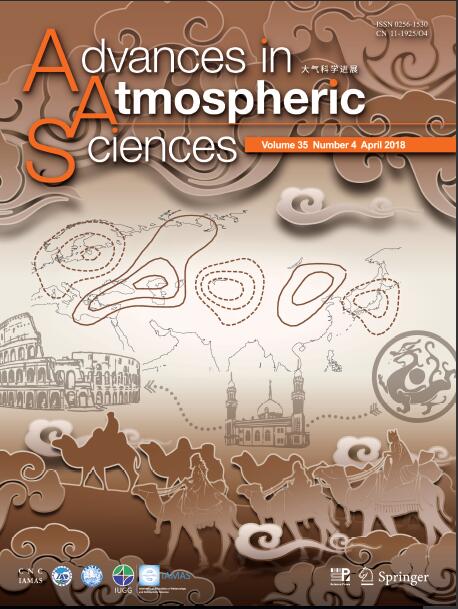The Silk Road pattern in meteorology, is a wave-like teleconnection pattern in summer propagating eastward under the wave-guidance of the upper-tropospheric Asian westerly jet stream. It shows up as alternate southerly and northerly anomalies (or cyclonic and anticyclonic circulation anomalies) along the jet, and is the leading mode of the interannual variability of upper-tropospheric meridional winds. It is interesting that this meteorological teleconnection pattern covers most domains along the ancient Silk Road, and exerts significant influences on climatic anomalies over a broad area of the Eurasian continent.
Professor LU Riyu and Dr. HONG Xiaowei from the Institute of Atmospheric Physics, Chinese Academy of Sciences, previously found that there is a significant positive relationship between the Silk Road Pattern and the north–south displacement of the Asian jet. Subsequently, in a recent study published in Advances in Atmospheric Sciences, they demonstrate that this relationship is robust only in north-jet years, and absent in south-jet years (the relationship is even negative under this condition).
"Our latest results indicate that stronger than usual Rossby wave source anomalies, which are primarily contributed by stronger than usual upper-tropospheric convergent anomalies around the entrance of the Asian jet, play a crucial role in this clear relationship during north-jet years", says HONG.
The results suggest that the relationship between the Silk Road Pattern and the north–south displacement of the Asian jet is asymmetric and complex. Thus, further investigation into the underlying mechanisms is needed.
In particular, LU mentions that “Climatic anomalies may be stronger in strong north-jet years due to the concurrence of the north–south displacement of the jet and the Silk Road Pattern, and thus more attention should be given to these years”.

The study was selected as the cover article for Volume 35, Issue 4, April 2018, of Advances in Atmospheric Sciences. The cover features the Silk Road Pattern (contours). (image by Advances in Atmospheric Sciences)
Reference:
Hong, X., R. Lu, and S. Li, 2018: Asymmetric relationship between the meridional displacement of the Asian westerly jet and the Silk Road Pattern. Adv. Atmos. Sci., doi:10.1007/s00376-017-6320-2. https://link.springer.com/article/10.1007/s00376-017-6320-2
Contact: LIN Zheng, jennylin@mail.iap.ac.cn
